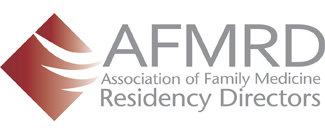To Train the Trainers

The Academic Council, responsible for the National Institute for Program Director Development, includes (left to right): Norman B. Kahn, Jr, MD; Richard Lewan, MD; Franklyn Dornfest, MD; Pam Snape, MD; Perry A. Pugno, MD, chair; Edward T. Bope, MD; and Robert McArtor, MD. Missing: Robert Avant, MD. Credit: Bixler/AFMRD
AFMRD arose as a result of the unique challenges program directors face. Once the highest priority need for representation was met, the organization sought to meet additional expressed needs, such as the "Guidelines for Ethical Recruitment of Family Practice Residents." It did not have to search long for yet another challenge -- the training of new program directors.
The average director manages a $1-2 million budget. As Dr. Haley points out, "It's an oversimplification, but a program director must get the teacher, resident and patient at the same place at the same time. This is much more difficult than it implies."
The job is largely managerial, yet few new directors come to the job with management training. In part, this may account for the three-to-five-year average tenure of directors.
In 1994 AFMRD took a major step in attempting to remedy this situation with the creation of the National Institute for Program Director Development (NIPDD). Under the chairmanship of Dr. Pugno, the Academic Council has developed a "prototype adult learning model." The institute includes three structured learning sessions, an advisorship with an experienced program director, and a longitudinal project. The learning sessions, which take place in the fall, during the spring RAP Workshop, and at the summer Program Directors Workshop, cover topics such as:
- Organizational leadership
- Management skills
- Accreditation procedures
- Finance
- Faculty development
- Medical staff issues
- Resident development
The sessions are structured to enhance adult learning, with two or three short lectures followed by time to interact and process the information. Faculty are members of the Academic Council, incorporating STFM, RAP, AAFP, ABFP, and AFPRD, along with additional content experts.
"The institute is different in that the entire faculty participates throughout the entire program," emphasizes Dr. Pugno. "They are available for questions and act as facilitators [of the break-out sessions]. They work together as a team, which is good modeling for the students."
It is also obviously faculty-intensive learning, but as Dr. Pugno adds, "We do it because we enjoy the teaching encounter."
The advisorship pairs an experienced program director with a fellow for seven months of one-on-one guidance. The fellows carry out projects specific to their residencies, with advisor assistance, that will be useful to their programs and potentially to other program directors. These projects may include studying the residency's financial impact on the medical center or creating a community health center track for residents, for example.
"Every member of the RAP panel of consultants volunteered to be advisors," says Dr. Pugno. "The success of the institute is the result of this tremendous outpouring of support from the directors."
The success has been noteworthy. Forty participants graduated from the first institute in June 1995, more than had originally been planned for. The second group had 60 members, which is expected to be the, maximum number that can be effectively accommodated at one time.
The institute was designed for new directors -- with two years or less experience, directors of developing programs and physicians planning to assume the role of program directors. However, interest from experienced directors has been high. As a result, planners of the Program Directors Workshop and the RAP Workshop are working to develop their curricula in line with the topics covered in the institute.
